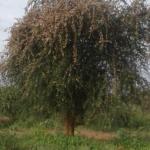Background
Introduction
Emergency Locust Response Program (ELRP) is a Government of Kenya project funded by the World Bank focusing on preventing the spread of desert locust; responding to the threat to livelihoods posed by outbreaks; and strengthening Kenya’s system for preparedness. The project is in the Ministry of Agriculture, Livestock, Fisheries & Cooperatives implemented under the State Department of Crops Development and Agricultural Research, between 2020 and 2023.
ELRP Goal – Program Development Objective (PDO) is to prevent and respond to the threat to livelihoods posed by the Desert Locust outbreak and to strengthen Kenya’s systems for preparedness.
The specific Project objectives are:
- To prevent the spread of desert locust in Kenya through Continuous surveillance and control
- To protect, restore and rehabilitate livelihoods of households affected by desert locust: invasion
- To strengthen coordination and build capacity for early warning and preparedness for desert locust;
Project coverage:
Component 1, 3 and 4 – will be implemented in all the counties experiencing desert locust invasions.
Component 2 will be implemented in the 15 Counties covering 72 sub-counties and 105 wards most impacted by locust invasion.
The Counties include: Mandera, Wajir, Garissa, Isiolo, Tharaka Nithi, Baringo, West Pokot, Elgeyo Marakwet, Samburu, Turkana, Marsabit, Kitui, Meru, Embu, Machakos
Project Funding: The project will be/is being implemented at a cost of KES. 4.3 billion (USS$43M) through a World Bank Loan facility (ELRP: P173702).
Beneficiary population:
Component 1, 3 and 4 will be implemented in all the counties that have experienced locust invasions.
Component 2 will operate in 15 counties that were most affected by the desert locust invasion. The direct beneficiaries of the project are estimated at 100,000 households consisting of farmers, pastoralists and female headed households that have been affected by the locust invasion and are food insecure. The beneficiaries will be reached through Common Interest Groups (CIGs), Vulnerable and Marginalized Groups (VMGs), Producer Organization (POs), Sub-projects and Micro-projects



